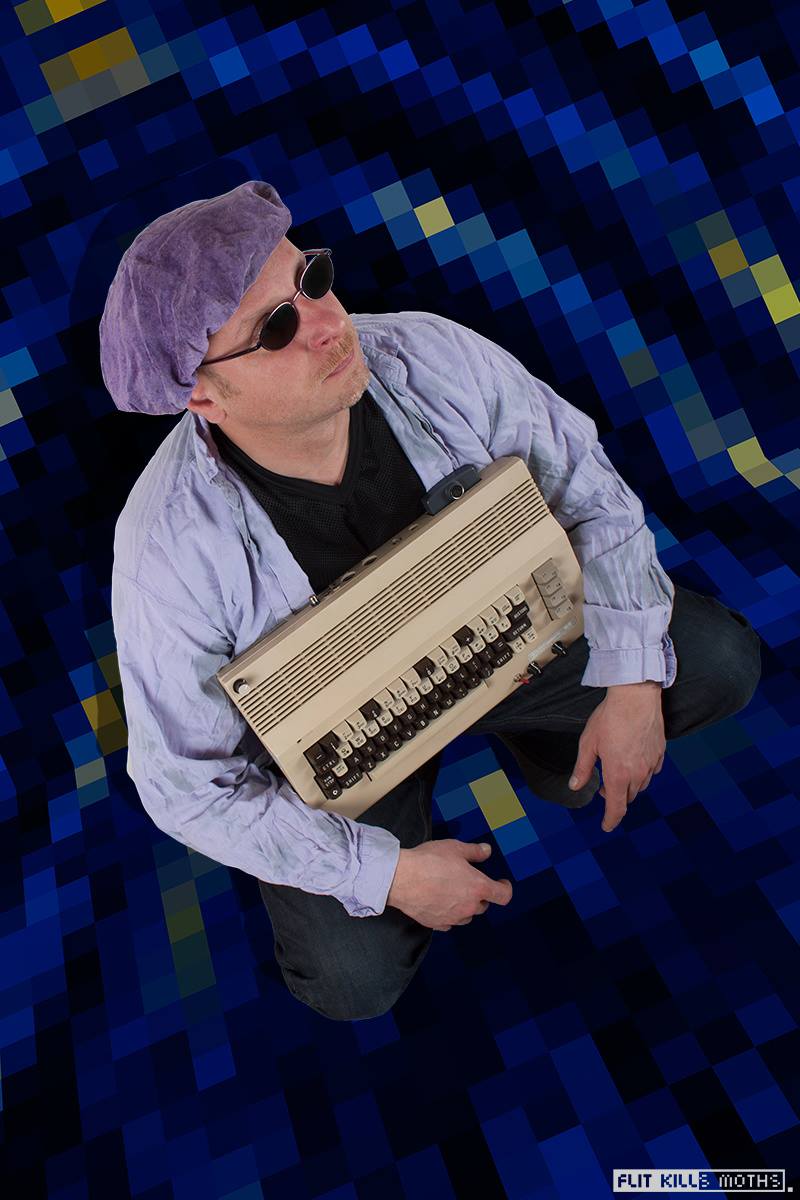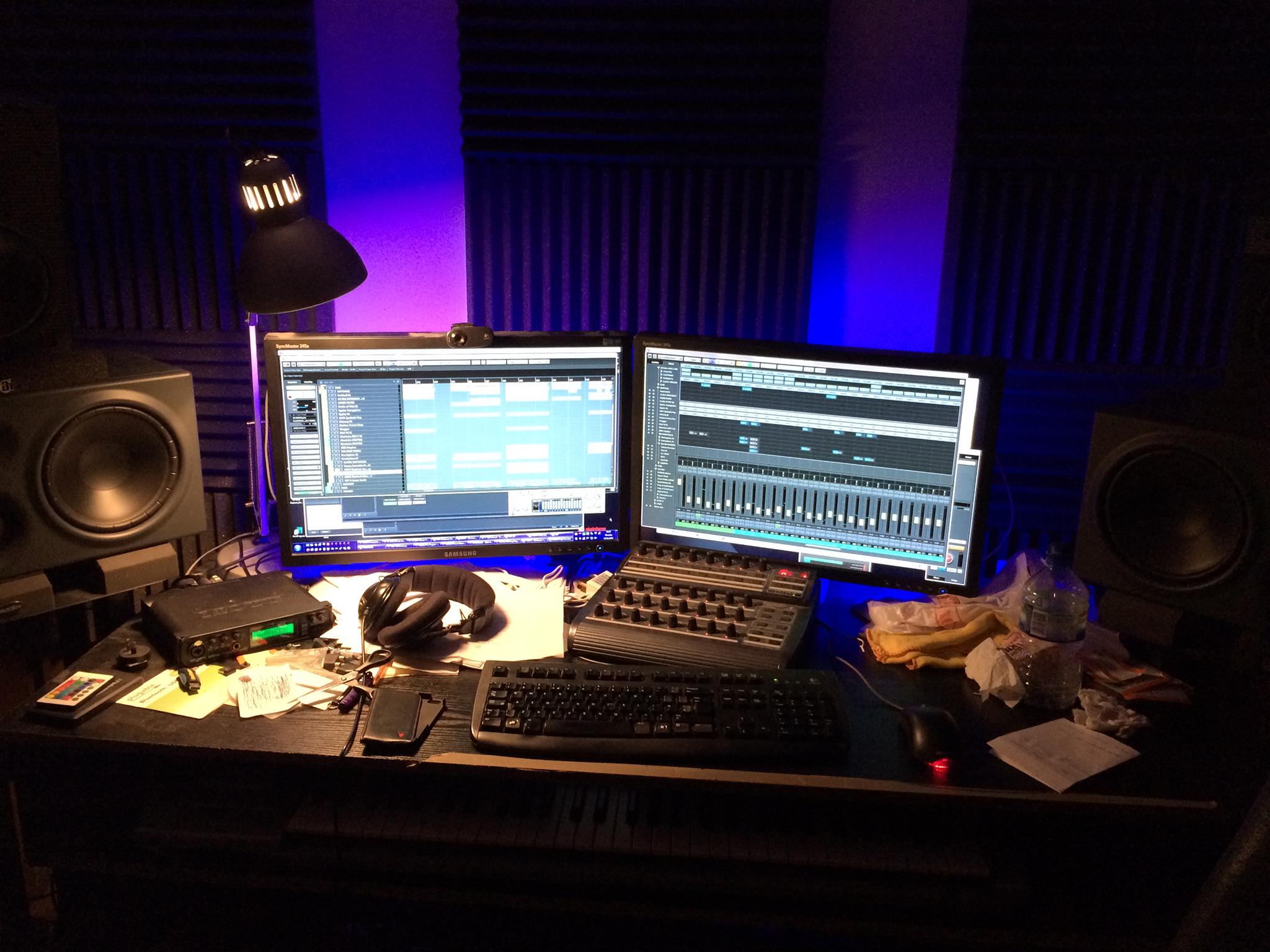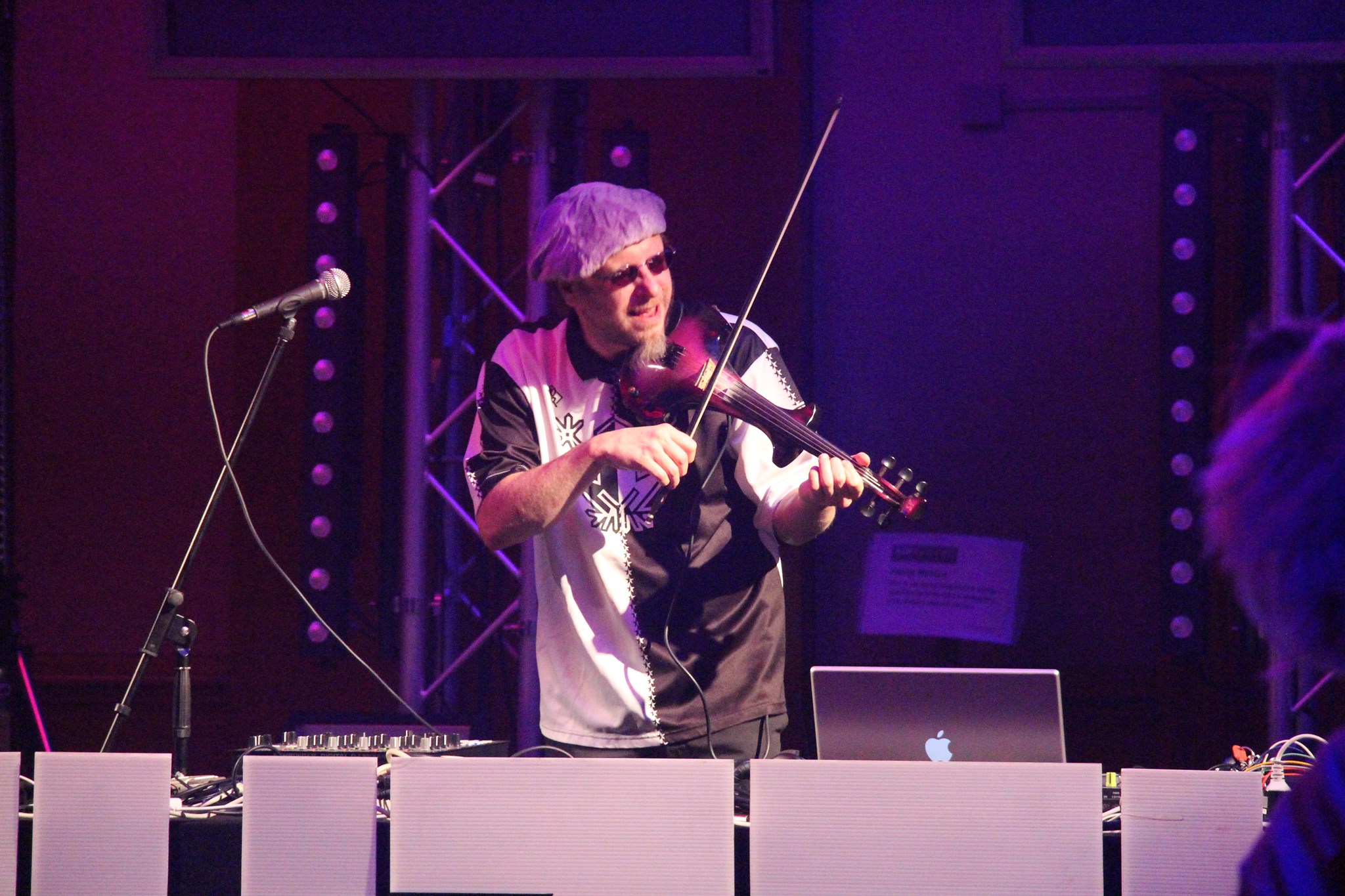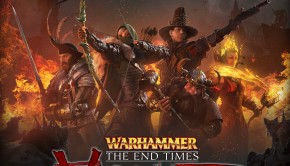Mark Knight Interview: Back in the Composer’s Chair
Mark Knight is an enduring British pioneer in game music and audio. The self-taught composer brought musical innovations to top series such as Duke Nukem, Warhammer, and Dungeon Keeper throughout the 90s. He subsequently transitioned into the role of audio director at Codemasters, where he brought technical mastery to titles such as the F1 and GRID series. Most recently, he made a welcome return to the composing chair with his debut solo album and the consecutive game releases F1 2015, Overlord: Fellowship of Evil, D/Generation HD, and F1 2016.
In this incredibly indepth interview, Knight takes his through his career all the way from his demoscene origins and violin performances to his solo album that has brought him round full circle. Along the way, he discusses all sorts of memorable projects for better or worse (Mario included), gives plenty of technical insight into his audio approaches, and reflects on returning to game music. To experience more of his music, this interview has been supplemented with clips from his latest album releases. A highly recommended read for anyone interest in game audio past and present.
Interview Credits
Interview Subject: Mark Knight
Interviewer: Chris Greening
Editor: Chris Greening
Coordination: Chris Greening
Interview Content
Chris: Mark Knight, many thanks for talking to us today. After 16 years away, you returned to game composition last year. How does it feel to be back in the composer’s chair after so long in the audio director’s chair?
Mark Knight: You’re welcome! It’s a fantastic feeling to be honest. I’ve grown up writing music, having started on the Commodore 64 computer back in the 80’s. Composing has always been a huge part of my life, if not commercially, then personally. As my career has progressed I’ve spent more and more of my time on management duties – something I never trained for, and my job became less and less enjoyable, so it’s great to be creating content again.
Chris: You entered the industry as a demoscene composer for circles such as Anthrox and Melon Dezign. Could you tell us about how you approach these collaborations from a musical and technical standpoint? Looking back at all this work, what were the greatest highlights for you?
Mark Knight: There really wasn’t a lot to it back in those days. Communication was mainly done through the post with the Europeans, although some had hacked calling cards and used local phone boxes, whilst obviously the phone was used mainly in the UK. Most of us back in those days were simply ‘churning’ out music in our spare time between our studies and posting disks to other members of the group you were part of, and they simply chose what tune they wanted to use. That was the case for me as I was mainly writing chiptune for the game/disk intros. I’m sure for the larger productions however there was more discussion between the coder, artist, and musician in designing how the overall production was going to work between the three disciplines.

For me, the highlight was simply the fact that someone felt that my music was good enough to be used in their production — especially the ones which became ‘hits’ which I still get messages about to this day. It gave me something to aim for rather than writing music to record on to a tape be the only person to listen to it on my Walkman. It’s the same now — going in to a video game shop and seeing a product on the shelf, which you’ve worked on. It’s a nice feeling to know that not only you contributed to a (hopefully) great production, but you got paid to do it too!
Chris: From the onset of your career, you worked on several of the biggest franchises: Wing Commander, Battletoads, Sim, and even Mario. How did you land such gigs?
Mark Knight: I was rather lucky I guess. Aside from one track in a Guy Spy game, Wing Commander was the first product I worked on: I had finished my college studies which generally had not gone too well as I skipped so many lessons to write my music, and had a nice portfolio of tracker modules to post out to the various development companies in the UK. I originally applied to do a Bachelor degree in Music Technology at Salford University, but was turned down because it was deemed that “a classically trained musician won’t be able to deal with music technology”. They did offer me an HND which I politely told them what they could do with it.
I had a few letters from development companies turning me down, but eventually Richard Leinfellner (of Palace Software fame) phoned me up on behalf of Mindscape to discuss the music conversion from PC to Amiga. We had a meeting, I gave a quote, and won the gig. About a month before I was to finish Wing Commander, Richard offered me a full time position as in-house composer at Mindscape, which was conveniently based in Burgess Hill (UK) – around 15 miles from where I was living in Brighton. Just as well, as I was about to send an application form to do management training at a well known supermarket chain!
As I was in-house, and Mindscape were owned by a company in the US called Software Toolworks, we did get a lot of conversion work including Battletoads, various Sims games, and the Mario Edutainment titles (probably the most stressful time I can remember because of the terrible development tools I had, with no documentation, for the SNES).
Chris: Could you share your experiences designing sound effects and arranging music on such titles?
Mark Knight: Wing Commander was the most fun to do because of the challenge within the tracker environment that I was already familiar with. I was supplied with the PC MIDI files, which were basically 24 track arrangements for orchestral instruments, and I needed to get that sounding good on the Amiga in less than 200k per tune. I basically had the MIDI files running on my Atari ST computer, using Cubase, and then created a set of samples to make best use of the 4 Amiga sound channels. Major and minor string and brass chords samples were used to fill out the arrangements (not unlike the multiplexed chords used on the C64) and I then re-arranged everything in to 4 channels using Protracker. The music was also interactive in that it switched to different tunes, with no delay, based on the gameplay. We did it, and it got a lot of praise. I listen to it now, and pull my face quite badly when I hear some of the samples, but actually because of the massive constraints I’m proud to have managed to achieve what we did. We also had to take into account the SFX, and the requirement for those to take one of the four sound channels, so the music was arranged in that it was always the least important channel musically which played the SFX.
Battletoads was done purely by ear. I was given the NES versions on a cassette, so I simply re-reacted them. I remember we had very little memory for sound on this game. So much so that you had to chose music or SFX in the front end menu. It also explains why the music sounds very ‘chip’. It was! I’m pretty sure my memory limit was around 30kb — which isn’t a lot for a sample only based music system. The Sim games was exactly the same — here’s the PC music, re-create it on the Amiga. This was a little more difficult as the Sim music in those days was very ambient with no strong time signature or rhythm. I had suggested doing something specific to the Amiga was asked just to remake what I was given. I think it must be my OCD which forced me to be so accurate when I guess it really didn’t matter that much!
And Mario. There was Mario’s Mission Earth and Mario’s Time Machine. Time Machine was the one which was released. It was NOT a fun project to work on for me, in fact none of the SNES games were. I was given a large silver box, two audio outs, and some software on the PC which allowed you to make the instrument samples, convert a MIDI file to its own format, and send that to the box. Unfortunately there was no documentation so the biggest issue for me was that coming from the Amiga, which used uncompressed 8-bit samples, I had no idea the SNES samples were compressed and therefore the requirement to have your loop points on particular sample boundary’s. I had no idea how I could get my samples to loop without them clicking. Quite embarrassing really, but there was no-one to point me in the right direction. Had I known what to do then the SNES and I would have had a much better relationship!
Chris: You went on to create fully-fledged soundtracks for Captive 2: Liberation and Warhammer: Dark Omen.
Mark Knight: Captive 2: Liberation was my first attempt at an orchestral soundtrack using my Korg 01/Wfd synth — and toward the end, an Emu Proteus Orchestral. I loved doing the title track for this. Originally I started on some tracker mods for the ‘normal’ Amiga, but everything sounded to ‘demoscene’ so I decided to concentrate on the CD32 version instead using the synths. I had no way of syncing the video playback, so I took timings of the main events in the video, and went home and wrote the track over two days. I took that back to work, they loved it, so then I converted it to a .mod. The in-game track was quite long, and needed to be a tad creepy and apprehensive. I think I heard another piece of music which I thought would work really well, so I took influence from that to write the in game music – which again, like Wing Commander, was to interactively change based on the game play.
Actually, Dark Omen was our second Warhammer game after Shadow of the Horned Rat. Shadow had quite a short development time for the music, and I was concerned that I wouldn’t be able to get it done in time so I asked to outsource some of the work. I had a demo tape from someone who wanted to get into games, and I thought his music was awesome so we contracted him to write a lot of the SOTHR music after I had written the title and intro tunes. That person was James Hannigan, who has since become one of the heavy hitters in the games industry. As far I’m aware, SOTHR was his first games gig! So anyway, I digress. Shadow set the scene for the Dark Omen soundtrack, which simply needed ‘more of the same’ — which is what it got. It was a mix of the style from SOTHR and from the Conan films. I will always like the Battle and Chase tracks… which sound like they’d work equally as well as electronic music, as they do orchestral.
Chris: Let’s talk Duke Nukem: Total Showdown…
Mark Knight: The Total Meltdown game was programmed by Nick Pelling, the incredible programmer who also did the Wing Commander conversion – indeed, just like Wing Commander on the Amiga, few believed that Duke Nukem was even possible on a PlayStation. Anyway, I’d been made redundant from Mindscape a few months before the development team was shut down, and I guess I pestered Nick enough to get Total Meltdown.
We decided that the game was likely to sell more in Europe than in the US, so instead of simply converting the PC music we’d write a new soundtrack in a more dance/electronic music style and also re-arrange any of the existing PC tracks which would also work in that style. He also wanted me to hint towards some of the Japanese cyberpunk films like Tetsuo. I had a time frame of 3 months originally to produce 31 tracks. I went out and bought a 2nd hand Yamaha 02r digital mixer (which Nick kindly loaned the money for), without which the project would never have been completed (enough though the time frame was extended to 5 months in the end). This supplemented my Korg Trinity+, Kurzweil K2500r, Yamaha RM50 drum module and some ex Mindscape equipment I borrowed like the Akai S3000xl sampler.
It appears that the music in the game is like Marmite. You either love it, or you hate it. The Europeans seemed to like it a lot more than those across the pond who wanted to hear the standard Duke Nukem rock soundtrack which they loved so much. Can’t win them all! For me, the most disappointing thing is that on completion I had a total hardware failure. The Mac clone I used simply blew up, taking the hard drive with it, and my backups were on ZIP disks which all got the ‘click of death’ issue, so became unreadable. I’d love to go back to these tracks and re-record them properly with the skills I’ve gained since writing this.
Chris: Another of your more contemporary soundtracks is CyberSpeed. Could you share your inspirations for this part-retro, part-futuristic soundtrack? What inspired you to finally release this soundtrack and can we expect soundtrack releases for your other works?
Mark Knight: The original CyberSpeed game was another first for me. To write ‘dance’ music. Something I’d never tried before. I’m self taught, so have had no tuition in either composition, or production, and the lack of production skills really shows in the original CyberSpeed soundtrack. I did the CyberSpeed Unleashed version to get the music sounding more like how I heard it in my head, and indeed how dance music sounds in general. Having come back to music again now, I should really do an Unleashed V2 as I’ve learnt so much more… and have a powerful enough PC to deal with what I need it to do! I guess it goes on the ‘list of things to do which will never get done’.
As for inspiration, there were a number of Amiga mod’s which I certainly used ideas from, and Cluffy Flouds is definitely inspired by The Orb’s Little Fluffy Clouds. But again, a lot of it simply came from noodling around with the analogue synths I owned at the time. Particular sounds inspire me, and I play around with my extremely basic keyboard skills, and arpeggiators, and sometimes things just work.
As for soundtrack releases of other work. It’s mainly a question of time. I’d love to do Dark Omen. I’d love to do Duke Nukem as I already said. I think these days, though, soundtrack releases of new games are naturally released. I’ve just finished off on the F1 2016 download album right now, which I’ve uploaded to one of my websites for free download.
Chris: And then came your days at Bullfrog. Could you tell us your experiences there with Populous: The Beginning and Dungeon Keeper 2.
Mark Knight: These were in-house jobs this time at my dream developer. I was terribly excited to work at Bullfrog, especially because I would be working for Russell Shaw, whom I hold in extremely high regard. Unfortunately, he didn’t tell me at my interview that I was in fact replacing him!
Populous: The Beginning was another new style for me. I’m very much a melodic composer, and find slower more ambient music more difficult to write – probably because it normally bores me. However, this is what Populous required. It was made more difficult because my boss at the time did not agree with the use of ROMplers (music hardware which has samples of instruments stored in ROM and simply plays them back) and wanted me to only use samplers — even if this meant sampling the ROMpler into the sampler. Eventually, we got around this obstacle and I started using the good old Roland JV1080 module, with the world instrument expansion. I also used the Kurzweil K2500r and an Emu Emulator 4 for sampling duties. The flute sound used was a physically modelled flute from a Korg Z1, and the female voice was the partner of the sound engineer at EA. It worked really well. Anyway, although ambient in style, you’ll find Populous still has melodies running throughout — because, well…. it’s me. The soundtrack again ended up getting a lot of positive feedback.
Dungeon Keeper 2 is soundtrack I’m most proud of (although that could change with F1 2015). With this, I wanted to take elements of DK1 and bring it more up to date stylistically. Again, risking alienating the fans of the original game. I wrote three 25 minute in-game tracks for this, which have a number of levels which grow in intensity as the gameplay gets more and more hectic — so it starts of very ambient, arguably more sound effect led than musical led, culminating in some weird gothic drum and bass bastardisation, haha. We had software to cut the music up in to single bars, or four bar sections, and then link them all together so you could jump around the soundtrack. Some of this worked out of the box, and I had to write extra link music for the jumps which didn’t work. It’s probably the best game I’ve ever worked on too. Although a lot of the original Bullfrog people had gone by this time, there were still a lot of talented people there — especially the sound team, we all made a great sounding game! It was only recently I found out that the third, and arguably the best, track was never used. I have no idea where as it really was a cut above the other two. [Editor’s note: All three can be downloaded from his website.]
Chris: Since 2007, you have worked as an audio director at Codemasters on franchises such as Formula 1, GRID, and DiRT. Could you give us a rundown on what your responsibilities are? How do you manage the audio assets, internal team, and external contractors on such titles?
Mark Knight: I started as the Audio Lead on Race Driver: GRID. The game was already in Alpha, so it was my responsibility to simply get the game sounding as good as it could with the assets which had already been designed. There were three main audio designers on the project, along with two audio programmers. Some areas of the game, which were below the level I wished, had to be left as they were. Specifically, the engine sounds which were way below the quality levels of competitors such as the Need for Speed franchise.
After the rush of getting GRID out (and having a baby right as we went Alpha), as the audio lead, it was time to reflect on how audio was developed at Codemasters. For sure the results were good — actually amazingly good considering the technology we were using was massively under-developed. In a nutshell, with all of the projects going on, there were a number of things we needed to do: build an industry-leading department of audio designers, create (or use) some class leading implementation tools, and throw away the legacy vehicle recordings and start again. Those were the goals I set myself soon after joining the company. It took a few years, but you only have to listen to the difference in the audio between GRID and DiRT2 to see where we were going.
One of the biggest issues we had was with our audio tech. We had some great technology but the implementation tools were not very ‘designer’ friendly. At the time, Codemasters were developing their EGO tech to be a sellable middleware solution for other companies, so we were kind of forced to use it even though the Operation Flashpoint team were using FMOD. When I found out that the Flashpoint team were evaluating Wwise I felt enough was enough. I won’t go in to details, but we eventually convinced the power that be that we could achieve a heck of a lot more in our racing games if we were able to use middleware, and that move happened on F1 2012 IIRC with GRID 2 onwards and DiRT Rally onwards. You can really tell when we changed over, to the point now where DiRT Rally is in my opinion the best sounding racing experience out there. It’s disappointing in a way that I didn’t work on DiRT Rally in a hands-on way, but I have a little smile that all the processes I put in place in the early days have culminated in the way the game sounds.
The way we developed audio during my time as Lead was to move between projects (we were a central resource rather than being assigned to any one team), DiRT/GRID/F1, with certain people having particular areas. Front End, car engines, props (what you crash in to), crowds etc to get some consistency between games and indeed make life a little easier. The main external contracting what went on was with any music composition.
Chris: You have worked on the Formula 1 franchise since 2000, first as part of Bullfrog/EA and then as part of Codemasters. How do you feel the sounds and audio of the series have changed over the years? What have you been aiming for in the latest titles in the series?
Mark Knight: Yes, it appears to be one of these games I can’t get away from. I don’t mean that in a bad way though, I love F1 – I’ve been a fan for as long as I can remember.
It’s been a drastic improvement in my opinion. Some of this is simply due to the new more powerful platforms with more memory, but the rest is due to the increased experience of the people working on these games, both creatively and technically. I’m a far better sound designer now than I was when I first moved on to F1 in 2000. Indeed, I was mainly a composer before that. The sound designer part of me then was mainly grabbing sounds from sample libraries, topping and tailing them, and implementing them into the game.
Nowadays I consider myself 100% a technical sound designer not a creative one. That’s more important anyway for a game which requires you to recreate real world sounds for a simulation type game, rather than creating weird and wonderful spell effects for example. However, I have been learning over those 15 years to be a better sound designer. Learning the process of recording motor vehicles, using your ears to identify subtle audio effects and working out how the game should be playing them — that’s the sort of thing I’ve been learning since moving on to F1. It’s just a shame now that the real world cars don’t sound so good.
Whilst we’ve always aimed to be realistic, I’ve always wanted our racing games to have ups and downs in how the mix moves along. When you have a game which has an engine sound — constant surface sounds, constant wind noises, other constant sounds, etc. it can become tiresome on the ears, so you identify events you can use to change the mix. That may be slowing down to a hairpin bend, dropping the car volume to allow more of the crown to bleed through. Simple things, but it makes such a difference. That’s certainly what I tried to achieve when I was leading on a title, but now… I’m just about hopefully writing great music that fits in with the visuals of the flow of the game.
Chris: You marked your return to composition for two new titles last year, F1 2015 and Overlord: Fellowship of Evil, before scoring F1 2016 this year. What we can expect from your music from these titles? How would you compare the scores to your past work?
Mark Knight: I’ve matured in age, and matured in compositional style I guess. Although I’ve not been writing a lot of music recently, I’ve been listening to a lot and I think that subliminally that has an impact on your compositional style. Having said that, I can’t move away from the fact that I need some form of melody, or hook to keep me interested in the music I’m writing. I simply can’t write something to order if it bores me personally, so I guess you’ll always find some form of hook which keeps you wanting to listen to more, as it does to me personally. That’s probably going to be a problem for me moving forwards in that games developers normally want something clichéd written in the quickest amount of time possible to keep the costs down. But for me, I can really only write something I consider as good, if it comes from the heart – and that is a very organic thing which needs time to nurture and grow. Not great business sense, but I need self-fulfilment to allow me to commit 100%.
That’s what you get with the F1 2015 soundtrack. I was allowed to spend a day a week on it from June 2014 up until around November, when I then started putting more time into it. It was a labour of love. I actually really like the melodies and chord progressions that have come out of it, so much so that I took some of those hooks and expanded them for the 2016 game. Stylistically 2016 is less glitch and more electronic/synthy – I think Jarre and Tangerine Dream had more of an influence this time around. [Editor’s Note: You can freely download his full soundtrack releases for F1 2015 and F1 2016 from this page.]
With regards to comparing with scores from the past, I’d probably repeat the same answer, in that they’re more mature and compositionally educated. I found the Overlord soundtrack more challenging as I’m not an orchestral composer, not even close, and it shows when I get stuck with repeating chord sequences etc… so I save myself by introducing hooks/riffs/melodies which may be appealing to make up for the lack of proper orchestral arrangement/composition. And I think it worked.. which means it doesn’t rule me out for doing the same again in the future.
One thing I want to mention regarding the F1 soundtrack is that I grew up watching TV shows produced by Glenn A. Larsen, Knight Rider being the biggest influence on me at the time — he co-wrote the theme tune with Stu Philips. Whilst I was writing the F1 2015 soundtrack, Glenn sadly passed away whilst I was writing the credits music, which is why you hear a reference to the 1980’s Knight Rider theme. It had to be done, homage and respect to someone who was a massive part of my early years. I think I did enough to avoid any copyright infringement, but to those that know…. They know 😉
Chris: And now we know! Finally, you recently released the all-new original album Reawakening. Could you share the story behind this album? What was it like to revisit your classic sound and how did fuse this with modern music production techniques?
Mark Knight: I grew up with two main things in my life. 1) chip music, and 2) playing the violin. The Commodore 64 was the first example of electronic music that I had heard, and it made a big impression on me at 10 years old. The fascination grew as I got older and made friends with like minded computer enthusiasts (or geeks) and starting collecting various demos many of which had this cool SID chip music. I started writing my own tunes on the C64, nothing good at all, but I loved doing it and when I upgraded to the Amiga I got involved in the demoscene primarily writing chiptune – which was basically music written to utilise the least amount of memory possible on the Amiga. As mentioned earlier, these tunes were mainly used in game intros, or cracktros, the vintage version of what keygens are today.
I then moved in to video game development as a composer, but still spent most of my spare time writing music. I then got married, and didn’t really spend much time writing music. By that time, my full time employment was as a sound designer rather than a composer, so I wasn’t writing much music at all. It was after I separated from my wife that I decided that I wanted to go back to my roots and write a chiptune album. I guess there was a lot of emotion running through me at that time, and also the fact that I’d not written a lot of music during that last ten years had me gagging to get musically creative again.
It felt like revisiting my youth, becoming reborn… or indeed Reawakened… Although I wrote the album on a traditional music sequencer rather than a tracker program, I stuck within the chiptune rules regarding limited audio channels for many of the tunes but for some of the others I went a bit more in-depth with the production, be that using additional sound sources or the way the sounds were processed within the mix. Indeed, I used a couple of MIDI Commodore 64s during production as well as more modern software recreations. I have more vintage hardware to use now, with 5 C64’s and a MIDINes, but as yet I don’t have anywhere to set them all up. Some of the tunes are re-workings of old Amiga chiptunes which I wanted to see what they may sound like if updated a little. Also, my composition/arrangement skills have improved a lot over the years so it was interesting to see how those tunes would have sounded if I had written them now with more interesting basslines etc.
To go completely full circle, it wasn’t until I got my first live TDK gig that I introduced the violin in to the mix. Before I performed at Superbyte in 2013, I bought Ableton Live (software which allows to you arrange music live on the fly) and a hardware controller to with work it. I started re-creating the Reawakening tunes in Ableton, so that I could ‘DJ’ then…. But it was apparent quite soon that I’m not a DJ and I was getting zero enjoyment triggering loops and sequences whilst processing the music with effects in real time. It took a while to click in my head what was the obvious way to perform the tunes… with the violin… So that’s what I did, and it worked. So now I’ve managed to go back to writing chiptune and performing them live with the violin… both of which were the two main things in my life when I was ten years old.
Posted on September 6, 2016 by Chris Greening. Last modified on September 6, 2016.

















Pingback: Mark Knight | Pearltrees